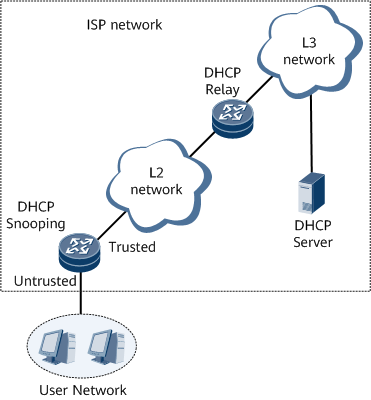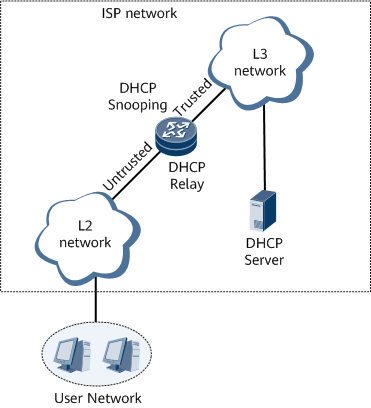Application Scenarios for DHCP Snooping
A Dynamic Host Configuration Protocol (DHCP) server dynamically assigns IP addresses to DHCP clients. Attacks, such as a bogus DHCP server attack and a DHCP denial of service (DoS) attack may occur during IP allocation. To address this problem, deploy DHCP snooping. DHCP snooping can be deployed on Layer 2 or Layer 3 devices. The DHCP relay is required when DHCP snooping is deployed on Layer 3 devices.


Configure a static DHCP snooping binding table to enable clients with static IP addresses to access the network.
Configure interfaces as trusted or untrusted to protect against bogus DHCP server attacks.
Configure the detection of DHCP request packets to protect against DHCP exhaustion attacks.
Configure the detection of Address Resolution Protocol (ARP) packets to protect against man-in-the-middle attacks.
Configure the detection of IP packets to protect against IP or media access control (MAC) spoofing attacks.
Configure the detection of MAC addressees to protect against DHCP DoS attacks.